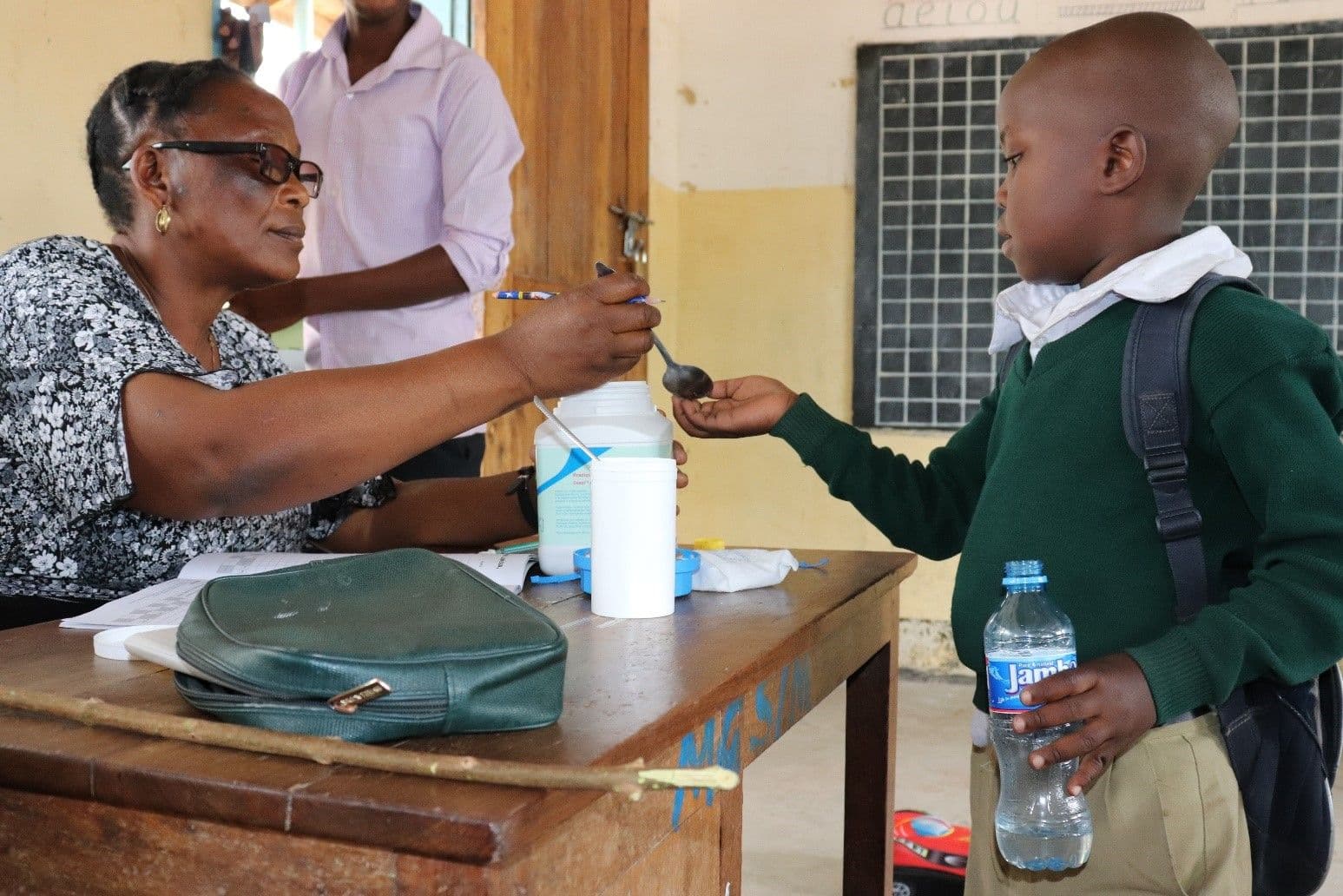Deworming children report

▲ Photo from Unlimit Health
Related recommendations
This is our summary and interpretation of original research published by our research partner GiveWell
Please note this page was last updated in 2018. While our overall views remain unchanged, some details may be out of date.
The problem
Neglected Tropical Diseases are a group of diseases that affect more than one billion people in developing countries, especially those living in severe poverty and without adequate access to sanitation. Schistosomiasis and soil-transmitted helminthiasis (STHs) are two common and neglected tropical diseases caused by worms. Schistosomiasis is transmitted through water infested by the larvae of a parasitic worm, and affects roughly 206 million people. STHs are transmitted through faeces and soil, and affect 1.5 billion people worldwide. Evidence suggests worms have an effect on children’s development, and that they negatively influence their ability to earn an income and support themselves later in life.
The solution
Mass deworming pill distribution is an inexpensive and safe solution to parasitic worms. The pills cost roughly between $0.50 and $1 per person and have no significant side effects. It is therefore cost-effective to distribute the medication to large groups of people, rather than testing to identify only those who are affected by the illness.
The evidence
There is strong evidence that deworming reduces the number of worms in people treated. A series of experiments conducted in Kenya also suggests deworming has a significant impact on the income of adults who benefitted from deworming as children. This evidence on income is used to arrive at the cost-effectiveness estimates for the organizations we recommend in this area.
Sources
- Anthony Danso‐Appiah et al., “Drugs for Treating Schistosoma Mansoni Infection,” Cochrane Database of Systematic Reviews, no. 2 (2013), Source; A Bennett and H Guyatt, “Reducing Intestinal Nematode Infection: Efficacy of Albendazole and Mebendazole,” Parasitology Today 16, no. 2 (February 1, 2000): 71–77, Source
- Edward Miguel and Michael Kremer, “Worms: Identifying Impacts on Education and Health in the Presence of Treatment Externalities,” Econometrica 72, no. 1 (2004): 159–217, Source; Sarah Baird et al., “Worms at Work: Long-Run Impacts of a Child Health Investment,” The Quarterly Journal of Economics 131, no. 4 (2016): 1637–1680
- WHO, ‘Fact sheet on schistosomiasis’ (Feb 2018)
- WHO, ‘Fact sheet on soil-transmitted helminth infections’ (Feb 2018)
- WHO, ‘Neglected Tropical Diseases’ (accessed December 2018)